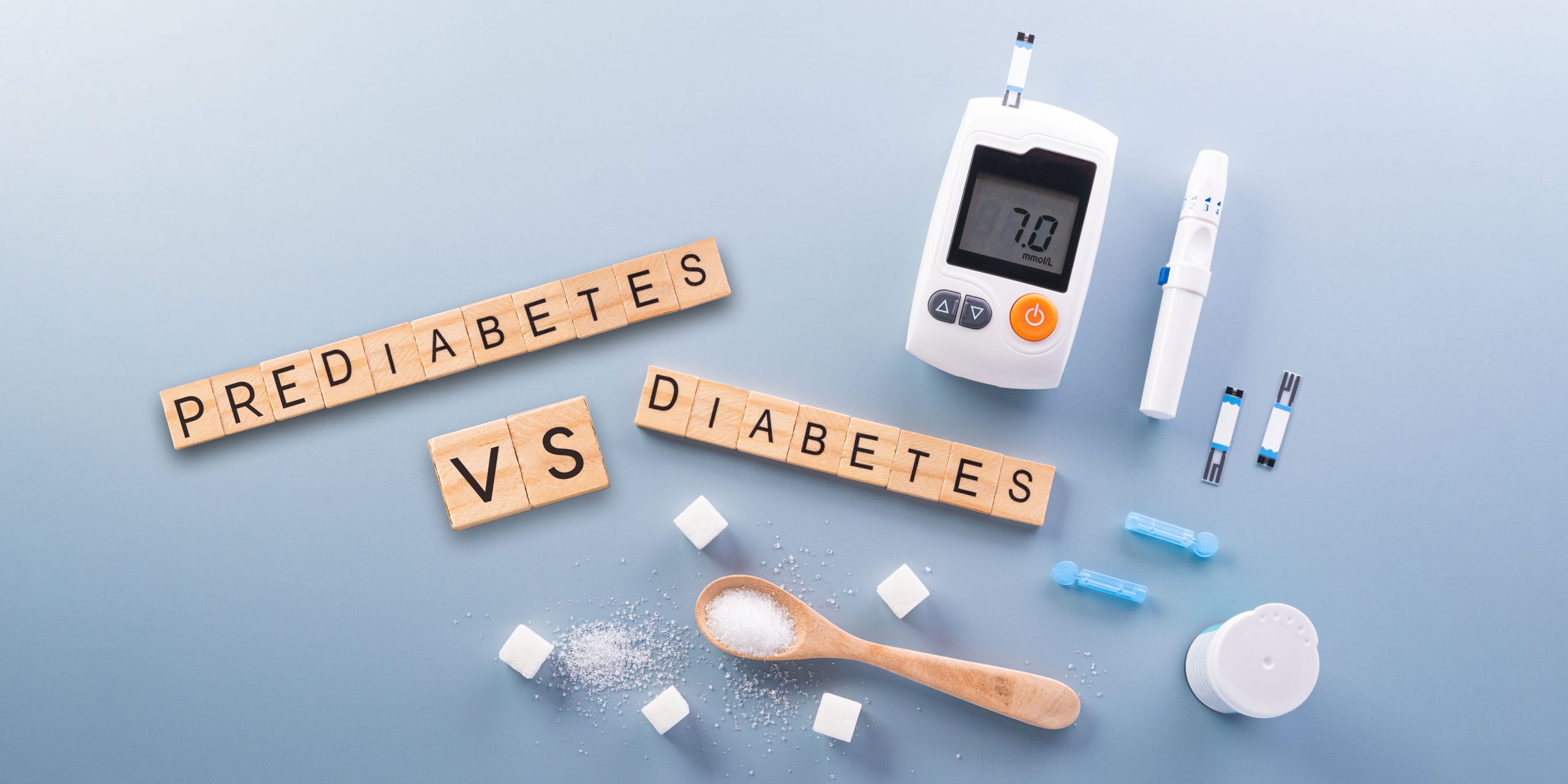Prediabetes vs Diabetes: What Is The Difference

Prediabetes is often confused with diabetes. Generally people think prediabetes is often followed by onset of diabetes. Well this is not true, prediabetes can lead to type 2 diabetes. However, people with prediabetes can reduce their chances of developing diabetes by following a healthy lifestyle.
Through this article, we will help you understand the difference between prediabetes and diabetes. But before understanding pre-diabetes vs diabetes let us understand what prediabetes and diabetes is.
What is prediabetes?
Prediabetes is often described as a condition in which a person’s blood sugar levels are higher than normal i.e. above 100 mg/dl but not high enough to be classified as type 2 diabetes i.e. not above 125 mg/dl . Generally prediabetes is considered as a warning sign that a person may be at risk of developing type 2 diabetes in the future.
Typically when a person has prediabetes, their body either fails to produce enough insulin or their cells do not respond to insulin in a way that they should.
The inability of the body to produce or utilize insulin affects its ability to regulate blood sugar levels of the body. Without enough insulin or the body’s inability to use it effectively, the amount of sugar in the blood can become too high.
People with prediabetes who continue to follow an unhealthy lifestyle are at an increased risk of developing type 2 diabetes, heart disease, and stroke. However, with healthy lifestyle changes such as losing weight, eating a healthy diet, and increasing physical activity, it is possible to reverse prediabetes.
Don’t struggle alone & get the expert care you deserve

What is diabetes?
Diabetes is a chronic metabolic health condition that affects the way your body processes blood sugar (glucose). Diabetes is often described as a health condition when either the body fails to produce enough insulin or the cells don’t respond properly to insulin, resulting in high blood sugar levels.
The below grid should give you an understanding of how the blood glucose levels are in a person with diabetes, prediabetes and no diabetes.
Generally diabetes is classified in two major types: type 1 diabetes and type 2 diabetes.
Type 1 diabetes is an organ specific autoimmune disease. This autoimmune disorder induces the immune system to mistakenly attack and destroy the cells in the pancreas that produce insulin. Type 1 diabetes is commonly diagnosed in children, however it can be seen in adults too.
Since the cells that produce insulin are destroyed by the immune system people having type 1 diabetes may require daily insulin injections to manage blood sugar levels.
The most prevalent type of diabetes is type 2, which develops when the body fails to use insulin, which can raise blood sugar levels. It is frequently linked to lifestyle elements like obesity, poor eating habits, sedentary lifestyle, stress, and lack of sleep.
Changes in lifestyle, such as weight loss, balanced diet, increased physical exercise, stress and sleep management can frequently control type 2 diabetes. To control blood sugar levels, along with lifestyle modification medication and insulin injections may be required.
Long standing, uncontrolled diabetes can lead to damage to nerves, kidneys, eyes. It can also affect the heart, brain and blood vessels. Nonetheless, people having diabetes can live healthy and productive lives with the right care.
Prediabetes vs diabetes
The main difference between prediabetes and diabetes is the level of blood sugar or glucose in the body.
Prediabetes is a health condition in which blood sugar levels are higher than normal. However the blood glucose level is not high enough that it can be termed as diabetes. People with prediabetes are at an elevated risk of developing type 2 diabetes. However, if you take proper care you can delay the onset of type 2 diabetes.
Diabetes, on the other hand, is a chronic condition. In people with diabetes the blood sugar levels are invariably high due to the body’s inability to produce or properly use insulin. Diabetes is often diagnosed when the blood glucose levels are above a certain level (typically a fasting blood sugar level of 126 mg/dL or higher, or a hemoglobin A1C level of 6.5% or higher).
While prediabetes is a warning sign that a person is at risk of developing diabetes in the future, diabetes is a chronic condition that requires ongoing management to prevent complications. Both prediabetes and diabetes can often be managed through lifestyle changes such as a healthy diet, maintaining a healthy weight, regular exercise, sleep and stress management.
Fittertake
Through this article we tried to help you get an insight about prediabetes vs diabetes, their difference and the common misconception associated with it. Having prediabetes is not conclusive that you will develop diabetes. With healthy lifestyle modification you can delay the onset of type 2 diabetes and lead a healthy life.
If you are finding it difficult to manage your blood sugar levels then #WorryNot – Fitterfly’s programs like Fitterfly Weight Loss Program and Fitterfly Diabetes Care Program are designed just to take care of you.
Our in-house expert coaches in the field of nutrition, physiotherapy and psychology understand the depths of quitting sugar. They will guide you with tips, tricks and practical solutions on ways to effectively manage your diet, exercise, sleep and stress.
Speak with us and see how we make it possible for you.
This blog provides general information for educational and informational purposes only and shouldn't be seen as professional advice.
Don’t struggle alone & get the expert care you deserve





















